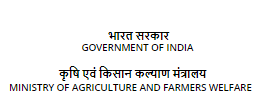A Method for Preparation of Enriched Yoghurt
Background:
Yogurt is a well-known milk-based dietary product. Typically, yogurt is produced by microbial action of lactobacillus on milk which converts the lactose sugar in milk into lactic acid upon fermentation. The produced lactic acid results in the coagulation of milk to form a thick sour-tasting emulsion, which is termed yogurt. Generally, yogurt is considered a source of protein, phosphorus, riboflavin (Vitamin Bz), thiamin (Vitamin B), cobalamin (Vitamin B1z), folate, niacin, magnesium, and zinc. Also, the use of yogurt as a calcium source has led to its wide acceptance and consumption. Moreover, nowadays acceptance of flavored yogurt has also increased. Typically, conventional flavored yogurt made by utilizing conventional technologies has a short shelf life due to a high rate of syneresis. Further, conventional flavored yogurt continuously loses its water-holding capacity and antioxidant properties during its shelf life. Furthermore, conventional flavored yogurt is a depleted source of anthocyanins, carbohydrates, and proteins. The wastes generated from the wine industry have immense value but are not being utilized in the enrichment of food materials. Utilization of fine wine lees in dairy products will open opportunities for producing a different product packed with antioxidants. It will also support the Indian wine industry by generating wealth from waste.:
Technology Details:
The yogurt having antioxidant activities was prepared by adding fine wine lees. This product was prepared with the idea of giving different dairy products rich in natural color, aroma, and nutritional, and antioxidant properties. Yogurt with antioxidants has improved rheological activities. This dairy product was enriched by adding processed fine wine lees. The fine wine lees have a natural color and aroma with antioxidant properties. The prepared product obtained a very good rating for acceptance which was decided on the organoleptic score basis.


